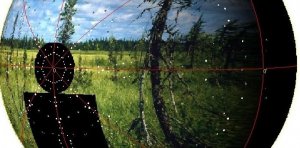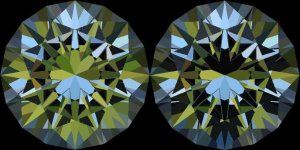Quoting RocDoc:
"Sergey showed us some very interesting stuff he is planning on his portable laptop computer that show the appearance of diamonds in various environments. The work he put into this is simply amazing. The detail of how the diamond appears is just short of spectacular. You take an image of where the diamond will be, input the type and proportion file, and it produces how the diamond will look in the image you input. He had a scene of daylight in a photos where there was intense daylight in an area surrounded with mountains, and you could see just how the diamond would look, with amazing detail, even with the reflection of the surrounding mountains reflected in the table of the diamond. Sergey really is an incredibly nice guy with lots of brilliant ideas to improve and develop some amazing changes to what we already have available to us. It's almost scary to think what incredible tools we'll have five years from now."
I hope that credit was given to Anton Vasiliev who presented this in an article of the Russian Gemological Bulletin No3(6), 2002. English translation was rejected by British Gemmological Journal in March 2004, although it was the sequel to an earlier article they published. I have shown some examples in Garrys thread "Simple Science", which I repeat here.
Here is the environment of one stone. The white dots are locations of light sources that will travel to the viewer's eye; the color at that dot will be seen on the gem's surface, face-up. The black object is the viewer's body and head.

"Sergey showed us some very interesting stuff he is planning on his portable laptop computer that show the appearance of diamonds in various environments. The work he put into this is simply amazing. The detail of how the diamond appears is just short of spectacular. You take an image of where the diamond will be, input the type and proportion file, and it produces how the diamond will look in the image you input. He had a scene of daylight in a photos where there was intense daylight in an area surrounded with mountains, and you could see just how the diamond would look, with amazing detail, even with the reflection of the surrounding mountains reflected in the table of the diamond. Sergey really is an incredibly nice guy with lots of brilliant ideas to improve and develop some amazing changes to what we already have available to us. It's almost scary to think what incredible tools we'll have five years from now."
I hope that credit was given to Anton Vasiliev who presented this in an article of the Russian Gemological Bulletin No3(6), 2002. English translation was rejected by British Gemmological Journal in March 2004, although it was the sequel to an earlier article they published. I have shown some examples in Garrys thread "Simple Science", which I repeat here.
Here is the environment of one stone. The white dots are locations of light sources that will travel to the viewer's eye; the color at that dot will be seen on the gem's surface, face-up. The black object is the viewer's body and head.






300x240.png)